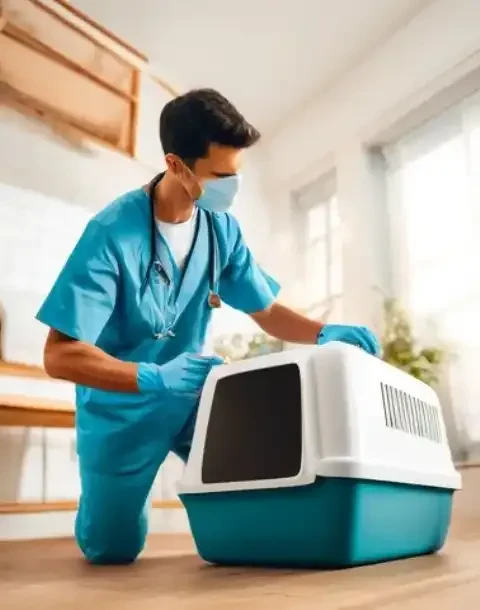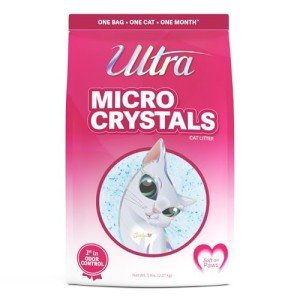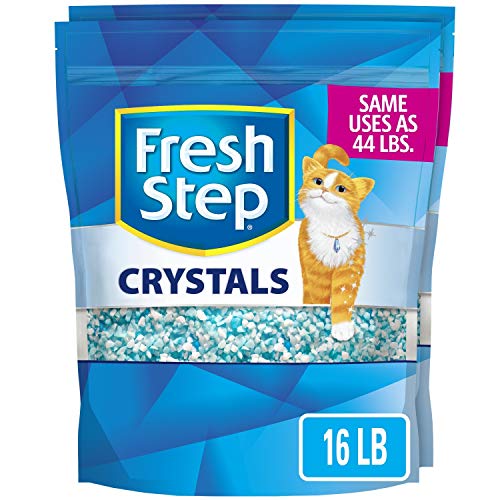As devoted cat owners, we are perpetually seeking ways to shower our feline companions with the best life possible. We strive to understand their enigmatic needs, cater to their finicky preferences, and create environments that are both stimulating and safe. While cats are often lauded for their independence and perceived low-maintenance nature, true cat lovers understand that responsible ownership extends far beyond simply providing food and shelter. We yearn to enrich their lives, tapping into their innate instincts and nurturing their physical and mental well-being. And in this pursuit, a surprising and exciting ally has emerged: technology. No longer relegated to the realm of futuristic fantasy, tech innovations are rapidly transforming how we care for and interact with our feline friends, opening up a world of possibilities to enhance their quality of life in ways we once only dreamed of. This article delves into the fascinating and ever-evolving landscape of these tech innovations, exploring how they are revolutionizing feline care, from the basics of feeding and play to the more complex aspects of health, safety, and environmental enrichment. Get ready to discover how the purrfect blend of technology and feline affection is creating a brighter, more enriched future for our beloved cats.
Mealtime, a cornerstone of any cat’s day, is undergoing a technological revolution. Gone are the days of simple food bowls and guesswork when it comes to portions. Smart feeding and hydration technologies are transforming the way we nourish our feline friends, offering precision, convenience, and a wealth of benefits for their health. Automated feeders are leading this charge, offering a level of control and consistency previously unimaginable. These intelligent devices dispense precisely measured portions of food at pre-programmed times, taking the guesswork out of feeding schedules and providing a structured routine that many cats thrive on. This scheduled feeding is particularly beneficial for weight management, a growing concern for indoor cats. By eliminating free-feeding and adhering to portion-controlled meals, automated feeders help prevent overeating and combat feline obesity, a significant health risk. For multi-cat households, the challenges of ensuring each cat receives the correct food and portion without food stealing can be significant. Enter microchip or RFID-enabled feeders. These ingenious devices recognize each cat’s microchip or an RFID tag on their collar, granting access to food only to the designated cat and dispensing their pre-set portion. This technology ensures that cats on specific diets or those needing controlled portions receive exactly what they need, while preventing faster eaters from monopolizing food and contributing to weight imbalances within the feline family. Taking convenience and control even further, many smart feeders now boast connected features, integrating with smartphone apps. These app-controlled feeders allow owners to remotely schedule feeding times, monitor food levels, receive notifications when food is dispensed or running low, and even track their cat’s eating habits – all from the palm of their hand, offering peace of mind and seamless control, even when away from home.
Hydration, often a subtle concern for cat owners, is equally important for feline health, and technology is stepping in to make it more appealing and accessible. Smart water fountains are designed to encourage cats to drink more, a crucial factor in preventing urinary tract issues, a common feline ailment. These fountains utilize filtered water, providing a fresher, cleaner taste that appeals to discerning feline palates and promotes better hydration. Crucially, many cats are naturally drawn to moving water. Water fountains capitalize on this instinct by circulating and aerating the water, mimicking a natural stream and enticing cats to drink more frequently. Beyond functionality, smart water fountains come in a variety of materials and designs, from sleek stainless steel and hygienic ceramic to durable plastic, and in styles ranging from simple fountains to multi-tiered streams and bubblers, allowing owners to choose a fountain that suits their cat's preferences and home decor. Taking smart hydration a step further, some fountains are equipped with water level monitoring and reminders, alerting owners via notifications when water levels are low, ensuring a constant supply of fresh, appealing water for their feline companions.
Beyond basic needs, technology is also revolutionizing the way we engage with our cats and provide enrichment. Interactive play, essential for both physical and mental stimulation, is being taken to exciting new levels with tech-enhanced toys. Robotic and automated toys are designed to unleash the inner hunter in our domesticated felines, even when we are unable to be actively involved in playtime. Self-moving toys, ranging from wheeled robots and rolling balls to whimsical flying toys, mimic the unpredictable movements of prey, triggering a cat's natural hunting instincts and providing hours of engaging entertainment. Many of these toys offer programmable play patterns, allowing owners to adjust speed, movement patterns, and timers to keep cats consistently challenged and prevent boredom. Automated laser pointers, a classic feline favorite, are now available with enhanced safety features. These automated versions project laser beams in randomized patterns across floors and walls, mimicking the darting movement of prey, captivating a cat’s attention and encouraging chase and pounce behaviors, while incorporating timers and randomized patterns to prevent eye strain, a concern with traditional handheld laser pointers. Even classic teaser toys are getting a tech upgrade, with automated feather wands and teaser toys now available, employing motion sensors and motorized movements to mimic realistic prey movements, providing engaging and unpredictable play experiences.
Interactive treat dispensers and puzzle toys are also getting a tech-enhanced makeover, combining mental stimulation with rewarding treats. App-controlled treat dispensers allow for remote interaction even when owners are away from home. Activated via smartphone, these dispensers release treats, providing a fun surprise for cats and enabling owners to initiate interactive play sessions from afar. Smart puzzle feeders take the challenge further, offering varying difficulty levels to engage a cat's problem-solving skills and dispense treats only upon successful manipulation. Some advanced puzzle feeders even incorporate tracking features, monitoring usage and engagement levels, providing insights into a cat's cognitive activity. For the ultimate in multi-sensory stimulation, combination play and treat toys merge movement, sounds, and treat dispensing, providing a rich and engaging experience that taps into multiple feline senses and instincts simultaneously. And for those moments when physical play isn't possible, or as a supplement to traditional toys, virtual play and stimulation are emerging as a novel avenue for feline enrichment. Cat-specific apps and games designed for tablets and screens feature moving images, sounds, and interactive elements intended to capture a cat's attention and provide visual and auditory stimulation. Video and audio stimulation can also be used to create enriched environments for indoor cats. Playing videos of birds or squirrels, or audio recordings of nature sounds, can provide engaging auditory and visual input, bringing a touch of the outdoors inside. However, moderation is key when it comes to screen time for cats. Ensure that screen time is engaging and enjoyable for the cat, and not causing stress or overstimulation. Pay attention to your cat’s cues and limit screen time if they seem disinterested or anxious.
Technology’s influence extends far beyond feeding and play, entering the realm of health and wellness monitoring, offering proactive pet care in the digital age. Activity trackers and wearables, once primarily for humans, are now available for cats, providing valuable insights into their daily habits and potential health indicators. These small, lightweight devices, often attached to collars, monitor activity levels, sleep patterns, and even calorie expenditure. By tracking activity levels, owners can gain a better understanding of their cat's daily exercise and identify any sudden changes that might signal illness or injury. Sleep monitoring can reveal disruptions in sleep patterns, another potential indicator of underlying health issues. Some trackers can even integrate with smart feeders, providing a holistic view of calorie intake and expenditure, assisting in weight management efforts. For adventurous outdoor cats or those prone to wandering, GPS trackers offer peace of mind. These trackers allow owners to monitor their cat's real-time location via smartphone apps, ensuring they stay within designated safe zones and facilitating quick recovery if they wander too far. Looking towards the future, the data collected by these trackers holds immense potential for data analysis and veterinary sharing. The wealth of data on a cat's activity, sleep, and potentially even vital signs could be shared with veterinarians, providing valuable insights for proactive health management and early disease detection.
Smart litter boxes are no longer just about automated scooping; they are becoming sophisticated health monitoring tools. While the convenience of automated scooping and waste disposal in self-cleaning litter boxes is undeniable, reducing odor and maintenance for owners, some advanced models are taking litter box functionality to a whole new level. Weight monitoring is emerging as a feature in some smart litter boxes. These boxes incorporate sensors that weigh the cat each time they use the litter box, tracking weight changes over time and alerting owners to potential weight fluctuations that could indicate health problems. Even more groundbreaking is the development of urine analysis capabilities in smart litter boxes. These advanced boxes can analyze urine samples for indicators of potential health issues, such as urinary tract infections, kidney problems, or diabetes, providing early detection of conditions that might otherwise go unnoticed until symptoms become more severe. These smart litter boxes often come with app connectivity and data reporting, providing owners with detailed information on usage patterns, weight trends, and urine analysis results, facilitating proactive health monitoring and informed conversations with their veterinarian.
Telehealth and remote veterinary care are also expanding access to convenient and timely veterinary advice. Video consultations with veterinarians offer a valuable alternative to in-person visits for initial consultations, follow-up appointments, and non-emergency situations. Telehealth is particularly beneficial for routine check-ins, medication adjustments, or addressing minor concerns, saving time and stress for both cats and owners, especially for cats who are anxious about vet visits. Emerging technologies are even exploring remote monitoring tools for vital signs. While still in early stages, research is underway to develop wearable sensors that can remotely monitor a cat's temperature, heart rate, and other vital signs, providing continuous health data to owners and veterinarians. Telehealth significantly enhances accessibility and convenience of veterinary care, particularly for owners in remote areas or with busy schedules, and for cats who are easily stressed by travel. Furthermore, environmental monitoring within the home is becoming increasingly integrated with cat health management. Smart home sensors, integrated with air purifiers and humidity control systems, can monitor and improve air quality, temperature, and humidity within the home, creating a healthier and more comfortable environment for cats, particularly those with respiratory issues or sensitivities. These sensors can alert owners to potentially harmful environmental changes, such as elevated levels of dust or allergens, or drastic temperature fluctuations, prompting them to adjust air purifiers, humidifiers, or thermostats to maintain optimal conditions for their feline companions.
Safety and security are paramount concerns for any cat owner, especially those with outdoor cats or those who worry about their indoor cats’ well-being while away from home. Technology offers a range of solutions to enhance feline safety and provide peace of mind. GPS trackers, already mentioned for health monitoring, are invaluable safety tools. Real-time tracking capabilities allow owners to pinpoint their cat’s location at any time, providing reassurance and facilitating quick retrieval if they wander off. Geofencing features enable owners to set up virtual boundaries, receiving notifications if their cat leaves a designated safe zone, such as the yard or neighborhood. Activity history tracking provides a record of a cat’s movements over time, helping owners understand their roaming patterns and identify any unusual excursions. Escape alerts notify owners immediately if their cat has left a pre-defined safe area, enabling swift action to locate and bring them home. GPS trackers come in various types, from collar-mounted devices to smaller, chip-based implants, each with its own pros and cons regarding size, battery life, and ease of use. Battery life and range are crucial considerations when choosing a GPS tracker, ensuring reliable tracking and long-lasting functionality.
Smart pet doors offer enhanced entry control and security. Microchip or RFID recognition pet doors allow only authorized pets, typically those with registered microchips or RFID tags, to enter and exit, preventing stray animals from entering the home and ensuring only your cat has outdoor access. Curfew and scheduling features allow owners to program pet doors to lock or unlock at specific times, controlling outdoor access based on time of day or weather conditions. App control and remote locking/unlocking features provide additional security and convenience, allowing owners to remotely control pet door access from their smartphones, ensuring their cat is safe and secure, even when they are not physically present. Integrating environmental hazard detection into smart homes provides a comprehensive safety net for pets. Smart home integration allows for combined safety systems that monitor for smoke, carbon monoxide, extreme temperatures, and other hazards, protecting not just humans but also pets within the home. Remote notifications and emergency alerts are crucial features of these systems, sending immediate alerts to smartphones if any hazards are detected at home, enabling prompt action even when owners are away. Furthermore, integration with smart thermostats can create automated safety responses. For instance, in case of extreme temperatures detected within the home, smart thermostats can automatically adjust to maintain a safe and comfortable environment for pets, even if the owners are not home to react immediately.
Creating a truly feline-friendly tech oasis within the home involves enhancing comfort and environmental quality through innovative technologies. Self-cleaning litter boxes, beyond hygiene, contribute to a more pleasant and odor-controlled environment for both cats and humans. Reduced maintenance is a significant benefit for busy cat owners, freeing up time and effort from daily scooping chores. Different cleaning mechanisms are employed in self-cleaning litter boxes, including raking, rotating, and even flushing systems, each with its own advantages in terms of efficiency and waste disposal. Waste level indicators and app notifications in some models further enhance convenience, alerting owners when waste receptacles need emptying. Temperature-controlled pet beds and mats provide tailored comfort based on weather conditions. Heated beds are ideal for cold weather or for senior cats who may have joint pain or difficulty regulating their body temperature, providing soothing warmth and comfort. Cooling mats, conversely, help cats stay comfortable in hot weather, dissipating heat and preventing overheating. Emerging smart beds with temperature regulation are taking comfort to the next level, automatically adjusting temperature based on ambient room temperature and even the cat’s body temperature, creating a truly personalized climate-controlled resting space. Air purifiers, beyond general home cleanliness, play a vital role in allergen reduction and improving air quality specifically for cats and their owners. Air purifiers equipped with HEPA filters effectively remove pet dander, dust, pollen, and other allergens from the air, significantly improving air quality, particularly beneficial for cats and owners with allergies or respiratory sensitivities. Smart air purifiers, equipped with sensors and app control, monitor air quality in real-time and can be controlled via smartphone apps, adjusting fan speed automatically based on air quality readings and providing data on air quality levels within the home.
Technology is also becoming a valuable ally in cat training and behavior modification, offering new tools and approaches for positive reinforcement and understanding feline behavior. Automated treat dispensers, when used strategically, can revolutionize positive reinforcement training. Remote activation of treat dispensers during training sessions makes delivering rewards immediate and consistent, crucial for effective positive reinforcement. Pre-programmed training schedules can be set up to dispense treats at specific intervals, facilitating scheduled training sessions and establishing routines. Some dispensers even incorporate voice recording and playback features, allowing owners to record commands and associate them with treat delivery, creating a multi-sensory training experience. Emerging behavior monitoring and analysis apps are venturing into the realm of understanding and addressing feline behavior. While still in early stages of development, some apps utilize sound and activity pattern recognition algorithms to analyze a cat’s vocalizations and movements, potentially identifying patterns associated with stress, anxiety, or other behavioral issues. Data-driven insights into behavior patterns, gathered over time, could provide valuable information about a cat's typical behavior and highlight any deviations that might warrant attention. Looking to the future, the potential for integration of these apps with veterinary or behavioral professionals is exciting, offering data-driven insights to aid in diagnoses and treatment plans for behavioral problems. Clicker training, a highly effective positive reinforcement technique, is also getting a tech upgrade. Clicker training apps provide virtual clicker functionality on smartphones, offering convenient access to the clicker sound and training guides. Smart clickers, currently emerging, may incorporate feedback and tracking features, such as built-in timers to track training session duration and data logging to monitor progress over time.
Ultimately, technology is bridging distances and enhancing the human-cat connection in meaningful ways. Remote pet cameras with two-way audio are perhaps the most impactful tech innovation for bridging the gap when owners are away from home. Visual monitoring via smartphone apps allows owners to check in on their cats at any time, alleviating anxiety and providing reassurance. Two-way audio features enable remote communication, allowing owners to talk to their cats, offer verbal reassurance, and even hear if their cat is vocalizing or distressed. Treat dispensing cameras combine visual monitoring with interactive remote feeding, allowing owners to dispense treats remotely, engaging their cat from afar and reinforcing the bond even when physically separated. Features like night vision and motion detection ensure 24/7 monitoring and provide alerts for any unusual activity or movement within the home. Automated play tools, controlled remotely, extend interactive play beyond physical presence. Smartphone-controlled toys, such as laser pointers and robotic toys, can be activated remotely via apps, initiating playtime even when owners are at work or traveling, ensuring cats receive consistent stimulation and engagement. Scheduled play sessions can be programmed with automated toys to run for set times throughout the day, providing consistent enrichment and activity, particularly for cats who are home alone for extended periods. Scheduling and management apps for cat care are streamlining and simplifying cat ownership. Reminder systems within these apps help owners manage complex cat care schedules, providing alerts for feeding times, medication administration, veterinary appointments, and other essential tasks. Care sharing and collaboration features are invaluable for multi-person households or when cat care is shared amongst family members or roommates, ensuring everyone is aware of feeding schedules, medication needs, and other care responsibilities, promoting consistent and coordinated care. Looking ahead, future integration with smart devices holds immense potential, with smart feeders, litter boxes, and other devices potentially triggering automated reminders within care management apps based on real-time data, creating a seamless and interconnected ecosystem for feline care management.
The future of feline tech is brimming with exciting possibilities, with emerging technologies poised to further revolutionize cat care and deepen the human-cat bond. AI-powered behavior analysis, for instance, holds promise for early disease detection, with algorithms analyzing subtle changes in behavior, vocalizations, and activity patterns to identify early warning signs of illness, potentially enabling earlier diagnoses and more effective treatments. Advanced sensory enrichment environments are being explored, aiming to create simulated outdoor experiences indoors, utilizing virtual reality, scent diffusion, and dynamic lighting to mimic natural environments and provide enriching sensory experiences for indoor cats. Personalized tech solutions tailored to individual cat needs are becoming increasingly conceivable, with technology adapting to a cat's unique personality, preferences, and health requirements, creating customized care plans and enrichment strategies. Integration of tech for multi-species households, creating harmonious tech ecosystems for cats and other pets, is also a growing area of interest, with technology facilitating peaceful coexistence and tailored care within multi-pet homes. However, with this technological advancement, ethical considerations and responsible tech use are paramount. Privacy and data security in pet tech must be carefully addressed, ensuring responsible handling of pet data. Avoiding over-reliance on tech is crucial – technology should enhance, not replace, real human interaction, affection, and attentive care. Ensuring that technology enhances, and does not detract from, real care and attention is vital to maintaining the core bond between humans and cats. Finally, considering affordability and accessibility of tech for all cat owners is crucial, ensuring that these innovations are not limited to a privileged few, but become accessible to a wider range of cat lovers, improving feline welfare across all socioeconomic spectrums.
In conclusion, technology is rapidly transforming and enhancing cat lives across a multitude of aspects, from revolutionizing mealtime and providing engaging play to proactively monitoring health, ensuring safety, creating enriched environments, and deepening the bond between cats and their human companions. As we look to the future, the potential of technology to create even happier, healthier, and more enriched lives for cats is truly inspiring. Embrace the purrfect blend of technology and feline affection, explore these innovative tools, and consider incorporating some of these tech advancements into your own cat care routine – you might just be amazed at the positive impact technology can have on your feline friend's life, and on the already profound and rewarding relationship you share.






